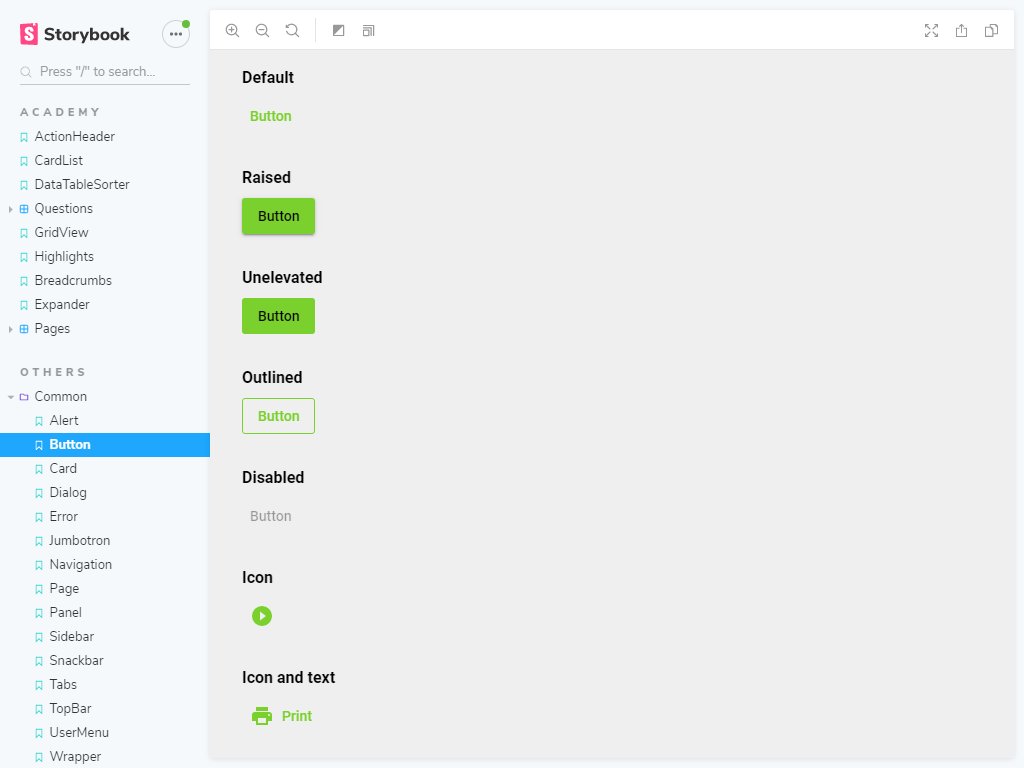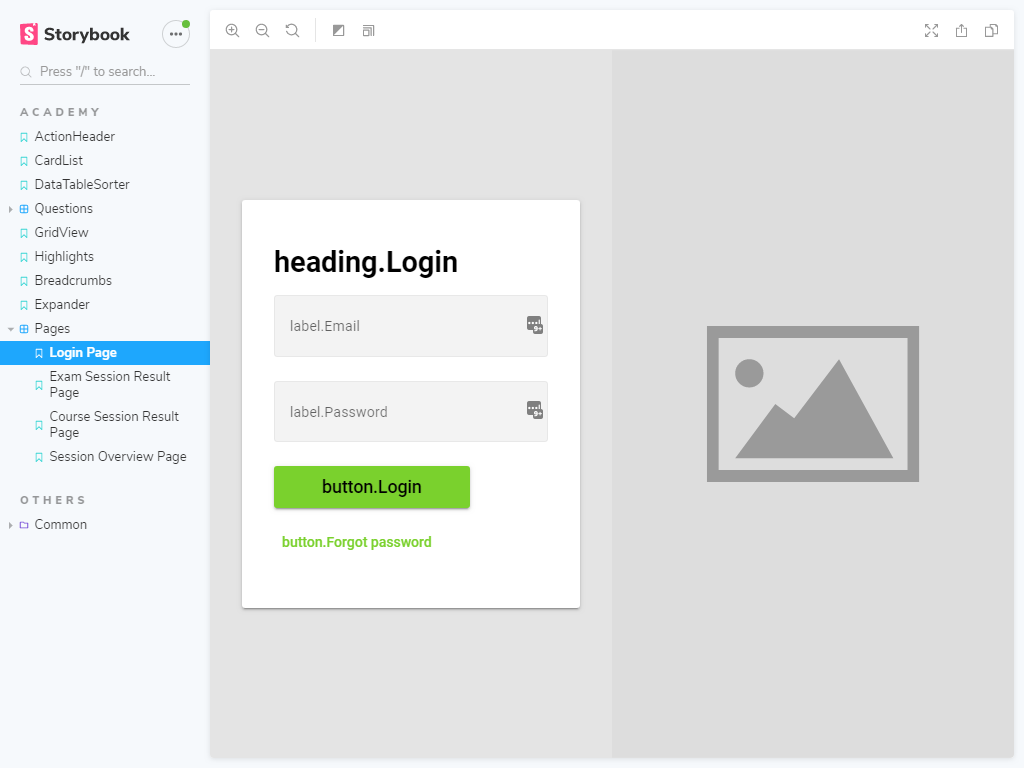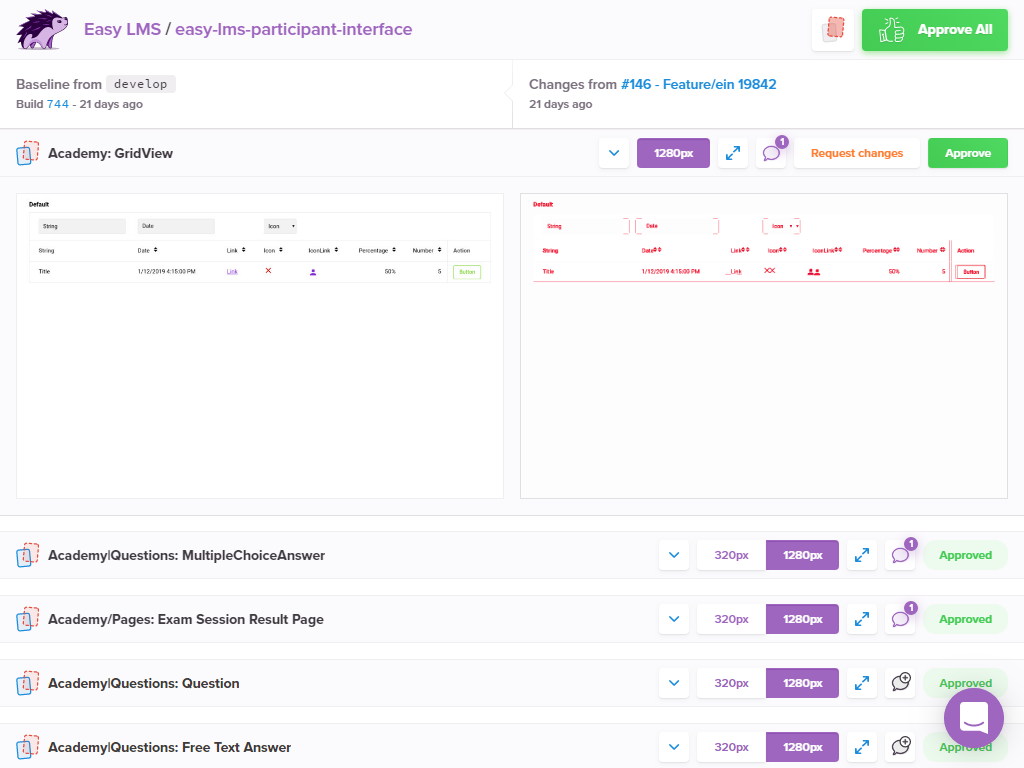How we maintain the quality of your academy using visual regression testing
Changes in one component can have unwanted effects in others. Visual regression testing enables us to deal with this problem, before it makes its way to our end users.

Recently we introduced our new academy interface. During development, we started using some new techniques to help us improve our workflow, and maintain a high quality standard for our product. We prevent bugs from happening by working in a component-driven way, and testing often for unintended visual changes (visual regressions).
Component-driven development
In recent years a big trend in user interface development has been component-driven development (CDD). Components are the smallest pieces of self-contained functionality, that add value on their own. CDD anchors into this by creating a build process that works from the bottom up. You first create small components that tie into bigger components, which together make up a feature or a page. Think of it as a bike being made up of smaller parts. You start with creating two wheels, then a frame. Add a steering wheel, some pedals, and a chain. Now it starts to look like a bike. That’s how we developed the academy interface too.
We experience numerous benefits from working in a component-driven way:
- Components are reusable. If you build a wheel, you can use it to build a bigger or a smaller bike, or maybe even a tricycle.
- Small components are easy to understand.
- Components are easily testable. You can test if the wheel works, you don't have to worry about the entire bike just yet.
- Working with components often speeds up our development process by providing plug and play solutions.
- Development is focused. It’s easy to keep track of component variations.
- There are tools available to easily keep track of all available components that have been created by colleagues.
Some examples of components we have created are: a button, a pop-up window, a multiple choice answer, and also a complete login page.
Storybook enables us to develop components outside of our application in an isolated environment, without worrying about dependencies or breaking the application.
The story of our interface in Storybook
After creating lots of components that are the backbone of our interface, we organize them in Storybook. Storybook is a component explorer, or component library. It’s an efficient way to keep track of all our components. Each component gets its own story in Storybook, where all possible variations of a component can be viewed:

For a button component, for instance, it is possible to view a default button, a raised button, an unelevated button, and a disabled button. It is also possible to interact with the component to see how that changes the component’s state or behavior. Type something in the login form for instance, and the input fields will tell you if the input is valid:

Storybook enables us to develop components outside of our application in an isolated environment, without worrying about dependencies or breaking the application.
We use Storybook as a design tool, as we adopted a story-driven design strategy. When we design, we are directly creating something that is valuable. Instead of creating wasteful Photoshop handoffs like we used to do before. When we add component stories to Storybook, we are automatically contributing to a living style guide, or user interface library. This means a developer can easily pick from a broad range of pre-made components to add to a feature they are creating. Causing our interface to be consistent and relatively cheap to develop:

Using add-ons we extended Storybook, so that we can test the accessibility of each component. Making sure the interface stays accessible for users with certain restrictions:

Visual regression testing using Percy
Earlier we talked about visual regressions being unintended visual changes. To become aware of these visual changes, we use a tool called Percy. Percy is a visual regression testing tool that only cares about visual integrity.
With Storybook I can build and style components in isolation, and I always have an overview of the different scenarios I designed. With the help of Percy, I always know the impact of the changes I make.
Anouk
Front-End Developer & UX Designer
For each component we have developed in our Storybook component library, a screenshot is made. When we change a component a new screenshot is made, and the two are compared with each other side by side. Differences are then marked in red to show clearly what has changed:


Percy ties directly into our continuous integration pipeline (the flow from idea to reality), by notifying us of visual regressions before changes go live. After a review by one of the designers, changes are either accepted or denied. Percy also allows for a discussion on a certain change:

All this helps us to keep the unwanted visual changes from making their way to you, our end users. Did a visual bug happen to slip through anyway? Keep on reading to find out how we handle that in this article
